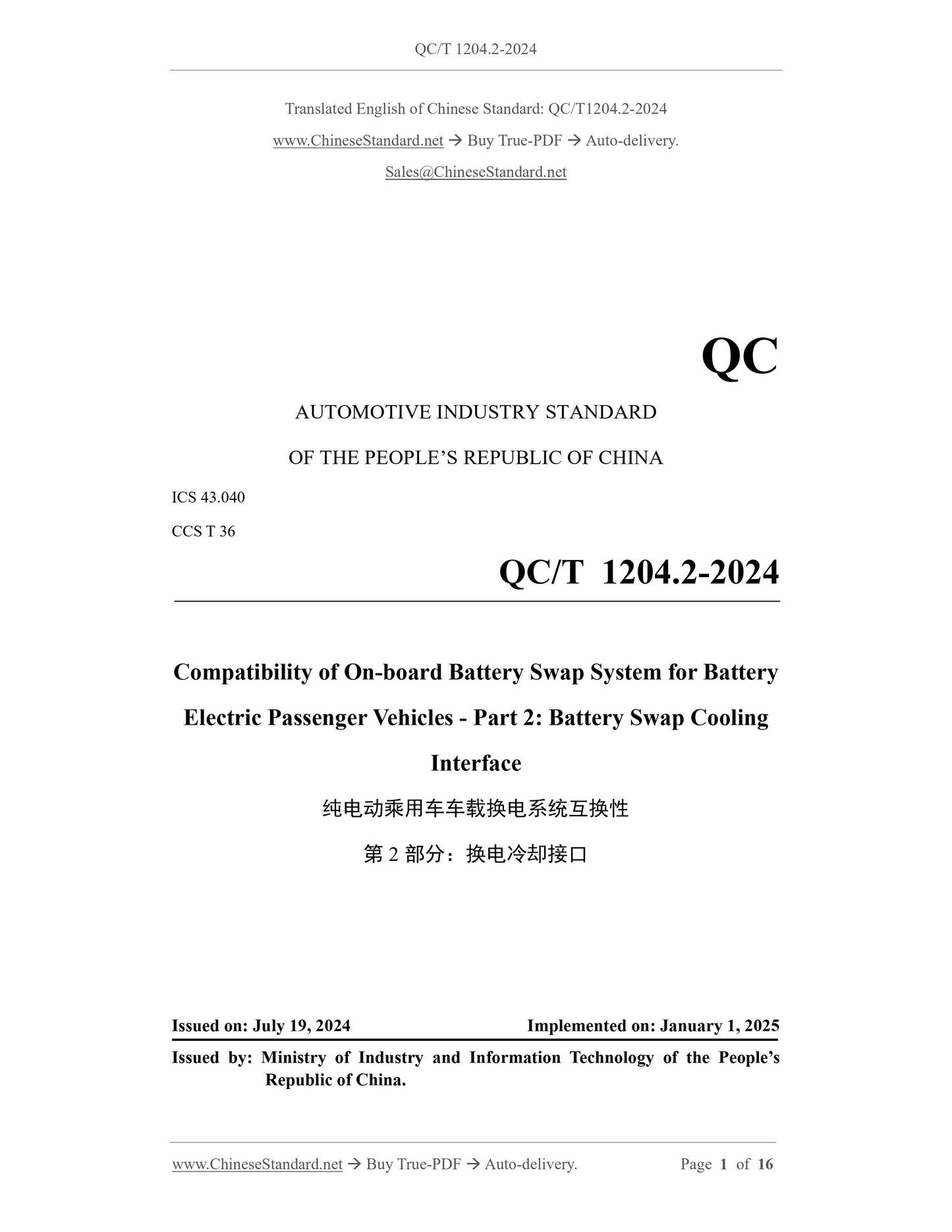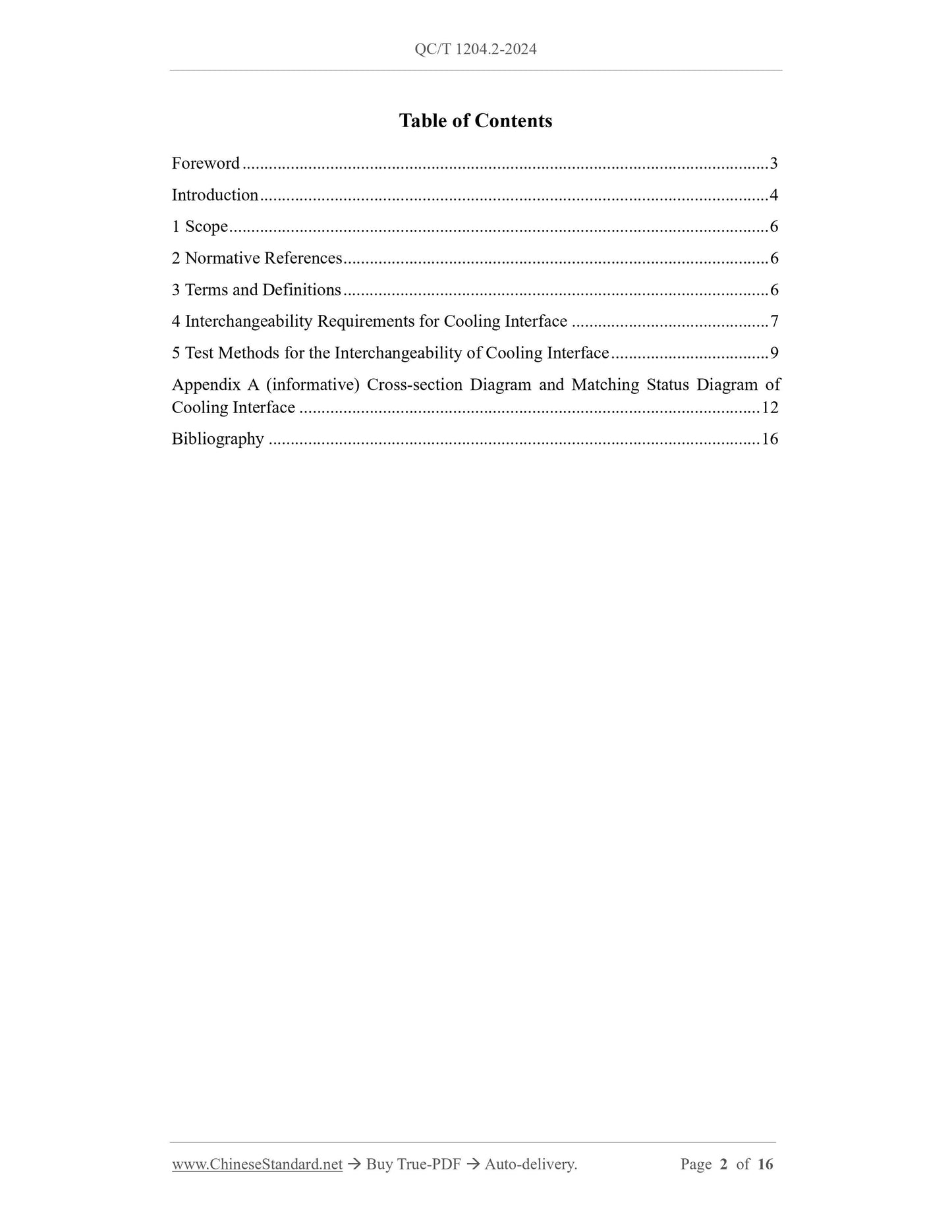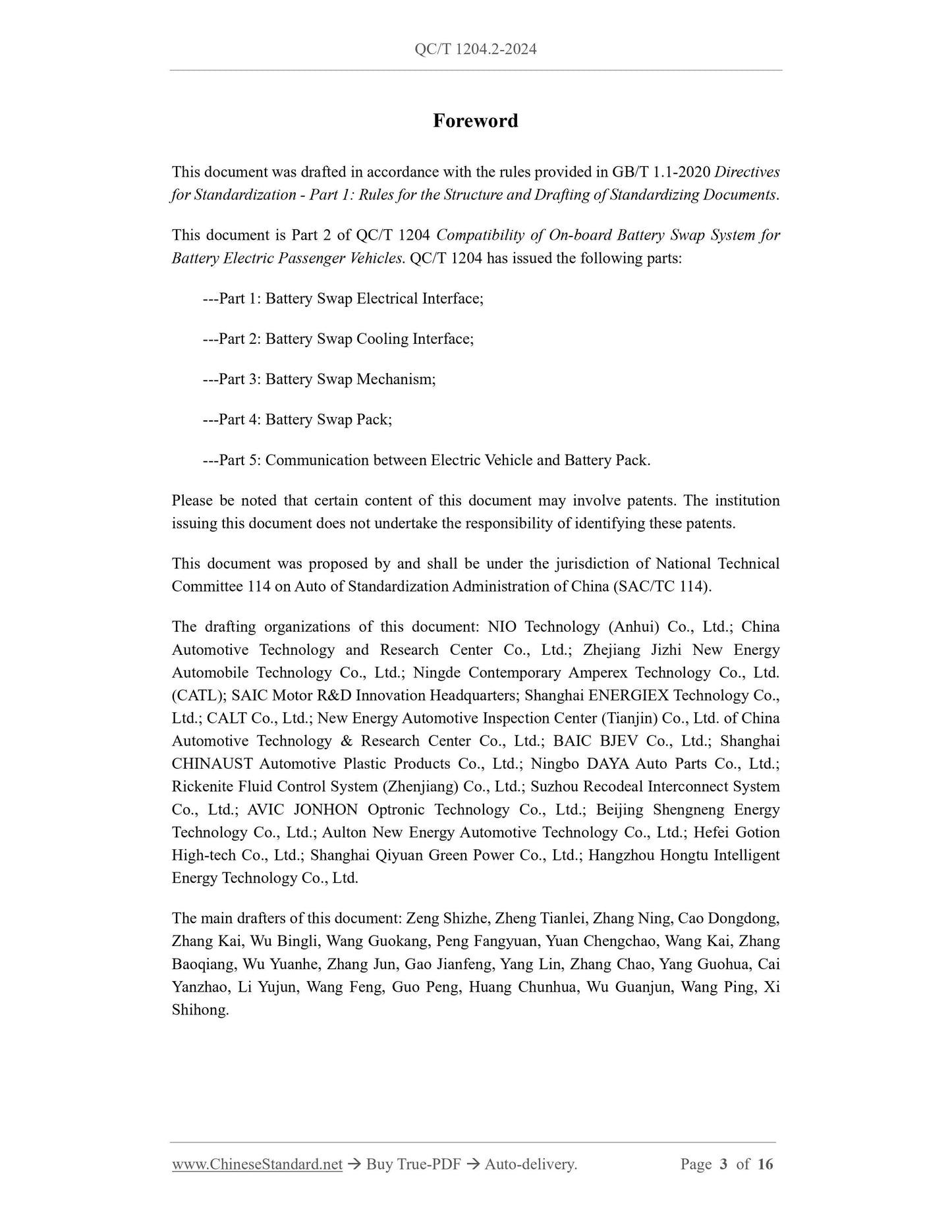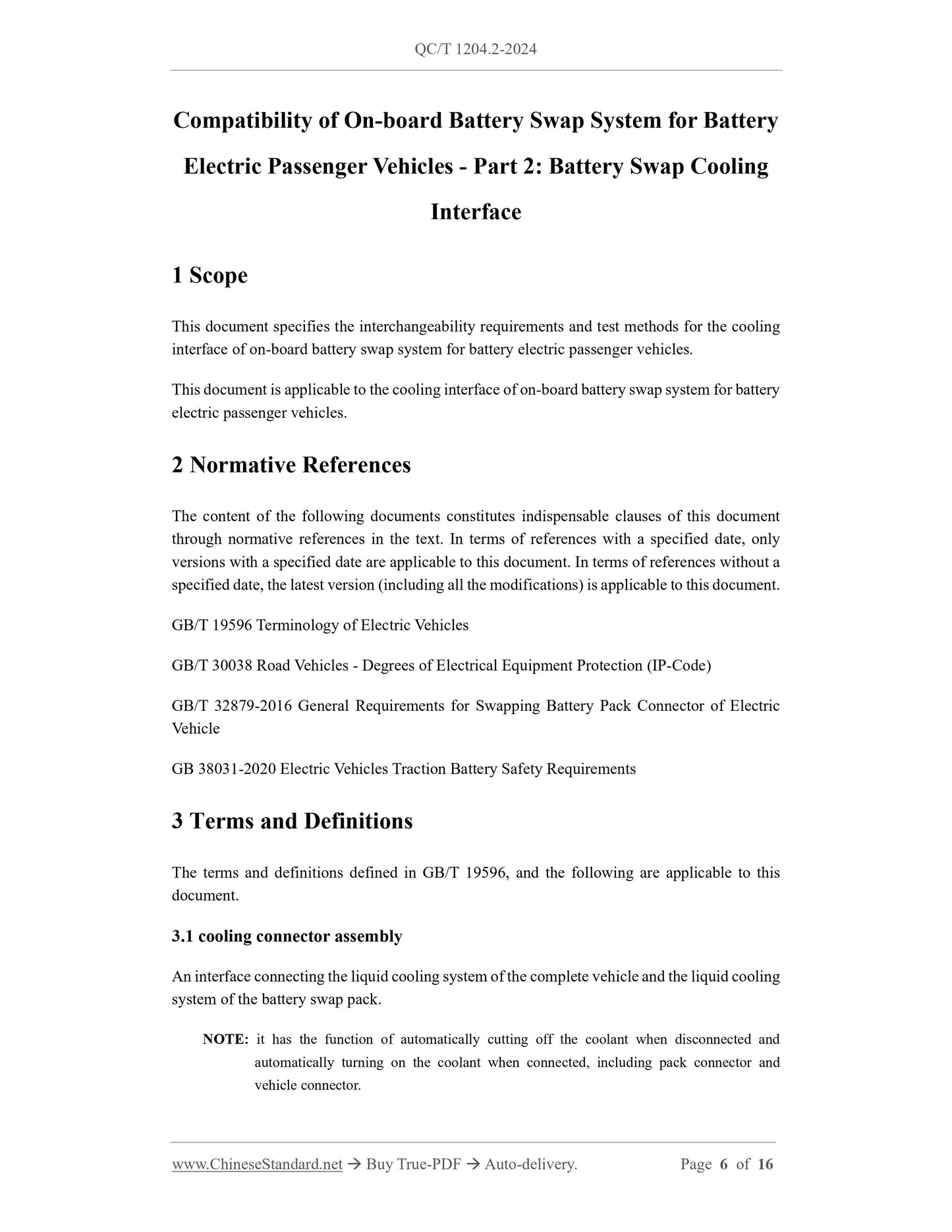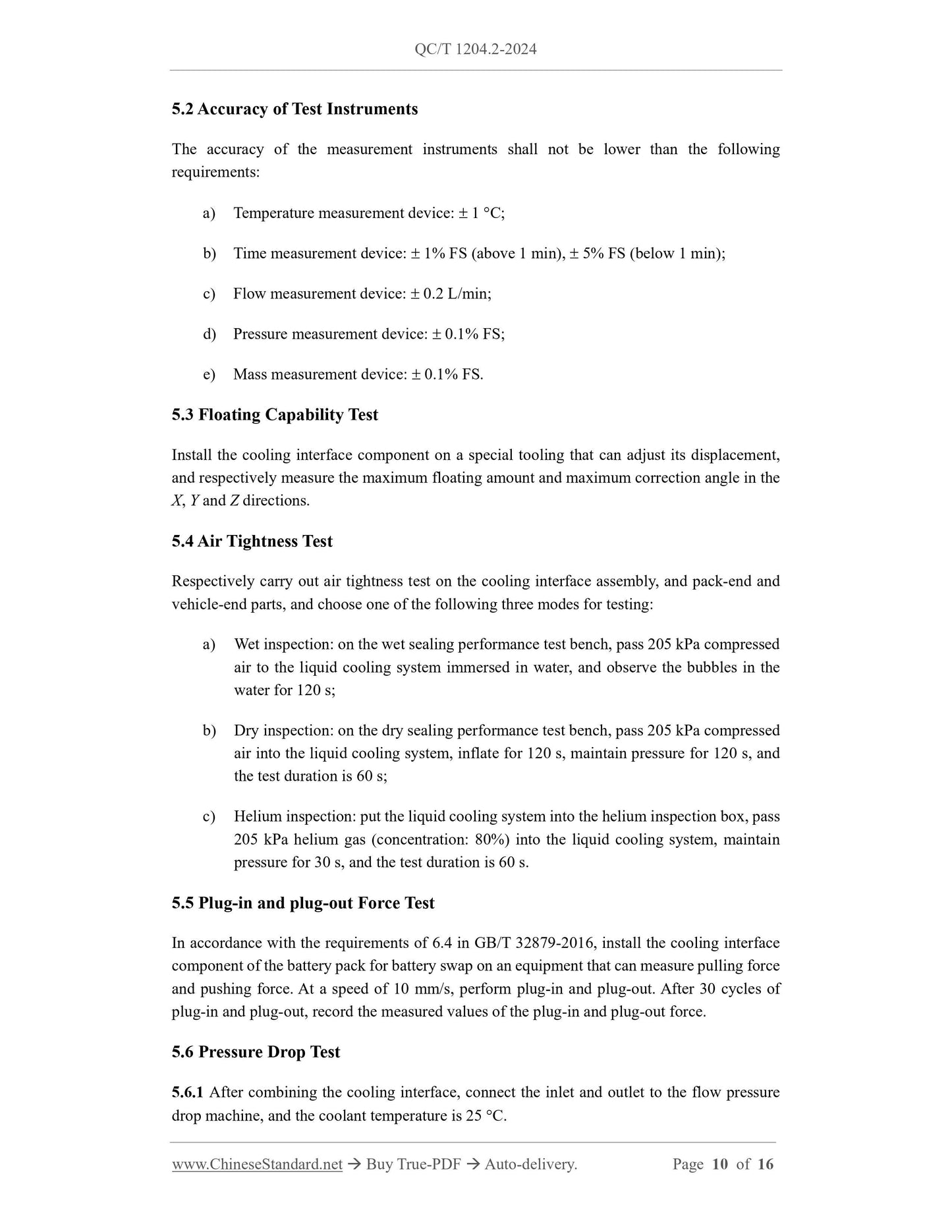1
/
of
5
www.ChineseStandard.us -- Field Test Asia Pte. Ltd.
QC/T 1204.2-2024 English PDF (QC/T1204.2-2024)
QC/T 1204.2-2024 English PDF (QC/T1204.2-2024)
Regular price
$215.00
Regular price
Sale price
$215.00
Unit price
/
per
Shipping calculated at checkout.
Couldn't load pickup availability
QC/T 1204.2-2024: Compatibility of on-board battery swap system for battery electric passenger vehicles - Part 2: Battery swap cooling interface
Delivery: 9 seconds. Download (and Email) true-PDF + Invoice.Get Quotation: Click QC/T 1204.2-2024 (Self-service in 1-minute)
Newer / historical versions: QC/T 1204.2-2024
Preview True-PDF
Scope
This document specifies the interchangeability requirements and test methods for the coolinginterface of on-board battery swap system for battery electric passenger vehicles.
This document is applicable to the cooling interface of on-board battery swap system for battery
electric passenger vehicles.
Basic Data
| Standard ID | QC/T 1204.2-2024 (QC/T1204.2-2024) |
| Description (Translated English) | Compatibility of on-board battery swap system for battery electric passenger vehicles - Part 2: Battery swap cooling interface |
| Sector / Industry | Automobile and Vehicle Industry Standard (Recommended) |
| Classification of Chinese Standard | T36 |
| Classification of International Standard | 43.04 |
| Word Count Estimation | 14,164 |
| Date of Issue | 7/19/2024 |
| Date of Implementation | 1/1/2025 |
| Issuing agency(ies) | Ministry of Industry and Information Technology |
Share
